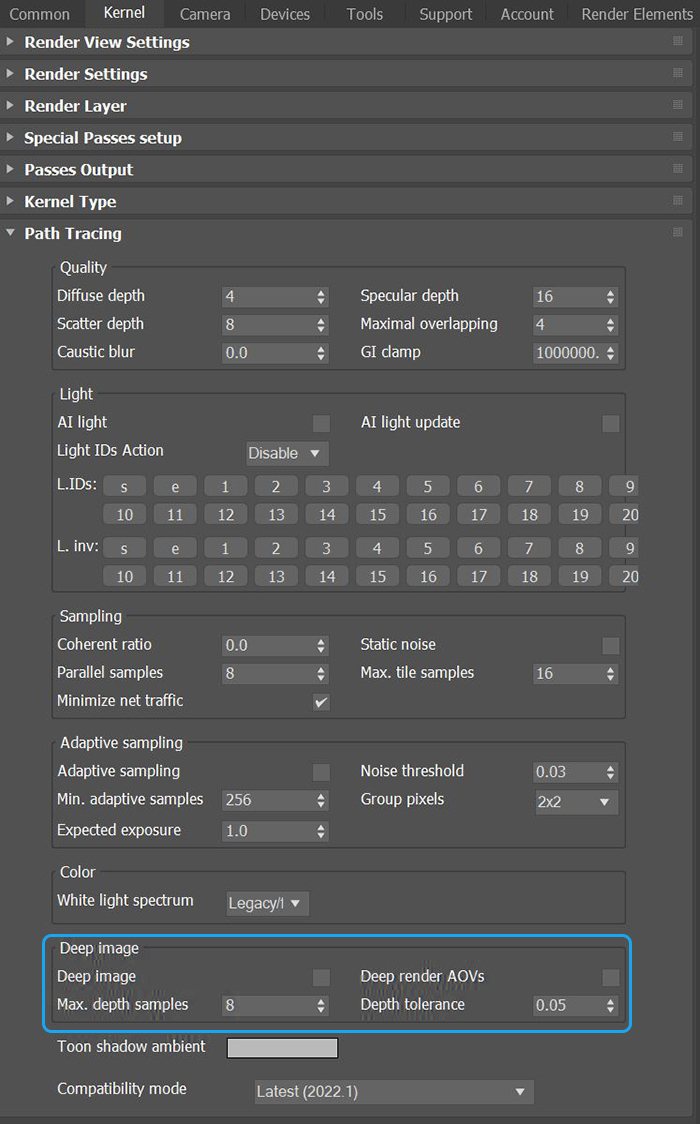Deep Image Rendering
Deep Image rendering improves the compositing workflow by storing Z-depth with samples. It works best in scenarios where traditional compositing fails, like masking out overlapping objects, working with images that have depth-of-field or motion blur, or compositing footage in rendered volumes.
Most major compositing applications now support Deep Image rendering. The disadvantage of Deep Image rendering is the large amounts of memory it requires to render and store deep images.
The standard output format is OpenEXR.
Enabling Deep Image Rendering
You can enable Deep Image rendering by going to the Render Setup window, clicking on the Kernel tab, then selecting the Deep Image checkbox (figure 1). Deep Image rendering works with the Path Tracing, Photon Tracing, and Direct Lighting kernels.
|
|
Deep Image Rendering
|
Figure 1: Deep Image parameters in the Path Tracing kernel tab
Deep Image Parameters
Deep Image - Enables rendering deep pixel images used for deep image compositing.
Maximum Depth Samples - When you enable Deep Image, this sets the maximum number of depth samples per pixel.
Deep Render AOVs - Includes rendering AOVs in deep pixels.
Depth Tolerance - When you enable Deep Image rendering, this option merges depth samples with relative depth differences that fall below this tolerance value.
For a typical scene, the GPU renders thousands of samples per pixel. However, VRAM is limited, so it's necessary to manage the number of samples stored with the Deep Render Passes and Max. Depth Samples parameters.

